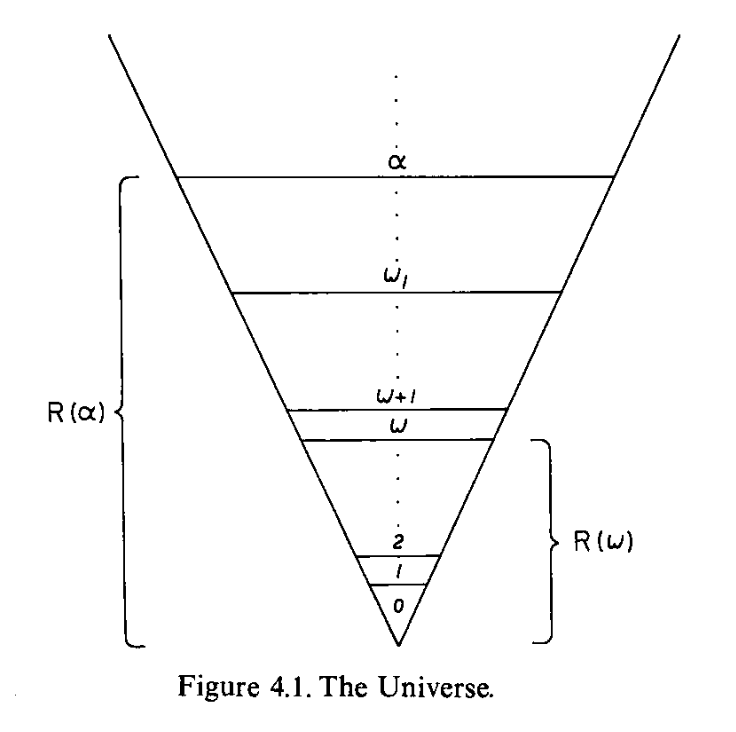this post was submitted on 06 Dec 2024
70 points (96.1% liked)
196
16748 readers
2662 users here now
Be sure to follow the rule before you head out.
Rule: You must post before you leave.
founded 2 years ago
MODERATORS
you are viewing a single comment's thread
view the rest of the comments
view the rest of the comments

in this context, the "universe" means "the collection of all sets", or more specifically, the Von Neumann universe (which is just a method of iteratively constructing "all" the sets). and so the figure is providing a way to visualize the collection of all sets.
this is done by assigning a so-called "rank" to each set. the notion of "rank" is kind of annoying to define in simple terms, but it's basically used as a tool for proving things by induction. it does this by assigning an ordinal number to each set. (ordinal numbers are "basically" a "continuation" of the positive whole numbers, in the sense that for any ordinal number ɑ, you can define the successor ordinal ɑ + 1; so, it's kind of like a way of formalizing the concept of ∞ + 1.)
you can think of "rank" as analogous to "cardinality", in the following way. the "cardinality" of a set is a cardinal number that basically says "how big" the set is. meanwhile, the "rank" of a set is an ordinal number that roughly says """how big""" that set is. (notice that there are a few extra scare quotes this time.)
lastly, the the set R(ɑ), where ɑ is an ordinal, is the set of all sets that have rank less than ɑ. i.e., the R(ɑ) is the set of all sets that have """size""" smaller than ɑ.
and this kind of explains the visualization using a cone: there are more sets of "size"
< 4than there are of sets "size"< 3, and there are more sets of "size"< 3than there are sets of "size"< 2. so it kind of lets you see "the universe" as a cone in that way.